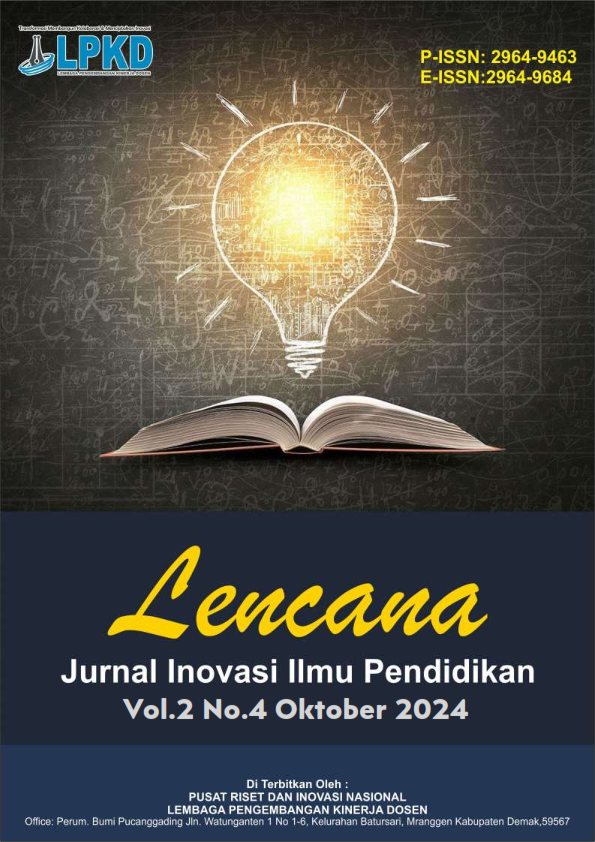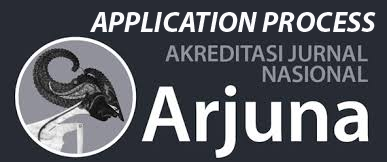Inovasi Snack Bar Dengan Proporsi Tepung Ubi Kayu (Manihot Esculenta) dan Tepung Kacang Hijau (Vigna Radiata)
DOI:
https://doi.org/10.55606/lencana.v2i4.4084Keywords:
Snack Bar, Cassava Flour, Mung Bean Flour, Organoleptic Test, Nutritional ContentAbstract
This research aims to develop a snack bar innovation using a combination of cassava flour and mung bean flour in three different proportions: 35g:15g, 30g:20g, and 25g:25g. An organoleptic test was conducted to evaluate the color, taste, shape, compactness, aroma, and overall preference of each product variation. The results of the organoleptic test showed that the proportion of cassava flour and mung bean flour significantly affected the panelists' preferences. The 25g:25g proportion received the highest scores for color, taste, and compactness, while the 35g:15g proportion was preferred for aroma. The 30g:20g proportion demonstrated a good balance in all aspects but did not stand out in any specific category. Nutritional content analysis indicated that the snack bar with a combination of cassava flour and mung bean flour contained 57.81% carbohydrates, 11.82% protein, 6.05% fat, and 1.2% fiber. It can be concluded that the combination of cassava flour and mung bean flour in a 25g:25g proportion is the best formula favored by the panelists.
Downloads
References
Achmad Budi Santoso & Joni Murti Mulyo Aji. (2018). Strategi Pemasaran dan Pengembangan Tepung Cassava pada Agroindustri UD. Nula Abadi di Kabupaten Bondowoso. JSEP, 11(3), November 2018, Agribisnis Fakultas Jember.
Constantin, O. E., & Istrati, D. I. (2018). Functional properties of snack bars. In S. O. Serna-Saldivar (Ed.), Processing, Innovation, and Nutritional Aspects (pp. 305-666). IntechOpen.
Darniadi, S., Adiandri, R. S., Hidayah, N., & Suismono. (2012). Optimizing formula of composite flour-based snack bar for emergency food product (EFP). 1011, 251-258. Yogyakarta, Indonesia.
Dewi, A. (2019). Pengaruh penambahan tepung ubi ungu terhadap mutu organoleptik zat gizi makro dan kadar betakaroten muffin. Program Studi Gizi, Skripsi, Sekolah Tinggi Ilmu Kesehatan Perintis Padang, Padang.
Hasanah, N., Permana, I. D. G. M., & Wisaniyasa, N. W. (2020). Pengaruh perbandingan almond dan edamame terhadap karakterisktik susu almond edamame. Jurnal Itepa, 9(4), 448-457.
Khotimah, D. F., Faizah, U. N., & Sayekti, T. (2021). Protein sebagai zat penyusun dalam tubuh manusia: Tinjauan sumber protein. PISCES: Proceeding of Integrative Science Education Seminar, 1(1), 1st AVES & LASER 2021, Articles.
Pratama, W., Anugrah, R. V., & Pontang, G. S. (2020). Daya terima snack bar rendah energi tinggi serat berbahan dasar tepung mocaf dan tepung kacang merah. Jurnal Gizi dan Kesehatan, 12(1), 45-51.
Ratnasari, D., & Yunianta. (2015). Pengaruh tepung kacang hijau, tepung labu kuning, margarin terhadap fisikokima dan organoleptik biskuit. Jurnal Pangan dan Agroindustri, 3(4), 1652-1661.
Rinda, Ansharullah, & Asyika, Nur. (2018). Pengaruh komposisi snack bar berbasis tepung tempe dan biji lamtoro (Leucaena leucocephala (Lam.) De Wit) terhadap penilaian organoleptik, proksimat, dan kontribusi angka kecukupan gizi. Jurnal Sains dan Teknologi Pangan Jurusan Ilmu dan Teknologi Pangan Fakultas Pertanian Universitas Halu Oleo Kendari, 3(3), 1328-1340.
Serna-Saldivar, S. O. (2022). Overview and State-of-the-Art of the Snack Food Industry. In Processing, Innovation, and Nutritional Aspects (pp. 305-666).
Sidabutar, W. D. R., Nainggolan, R. J., & Ridwansyah. (2013). Kajian penambahan tepung talasan dan tepung kacang hijau terhadap mutu cookies. Skripsi, Tidak dipublikasikan, Sarjana Program Studi Ilmu dan Teknologi Pangan, Fakultas Pertanian, USU, Medan.
TKPI. (2017). Tabel komposisi pangan Indonesia. Retrieved from https://www.panganku.org/id-ID/view
Downloads
Published
How to Cite
Issue
Section
License
Copyright (c) 2024 Lencana: Jurnal Inovasi Ilmu Pendidikan

This work is licensed under a Creative Commons Attribution-ShareAlike 4.0 International License.








